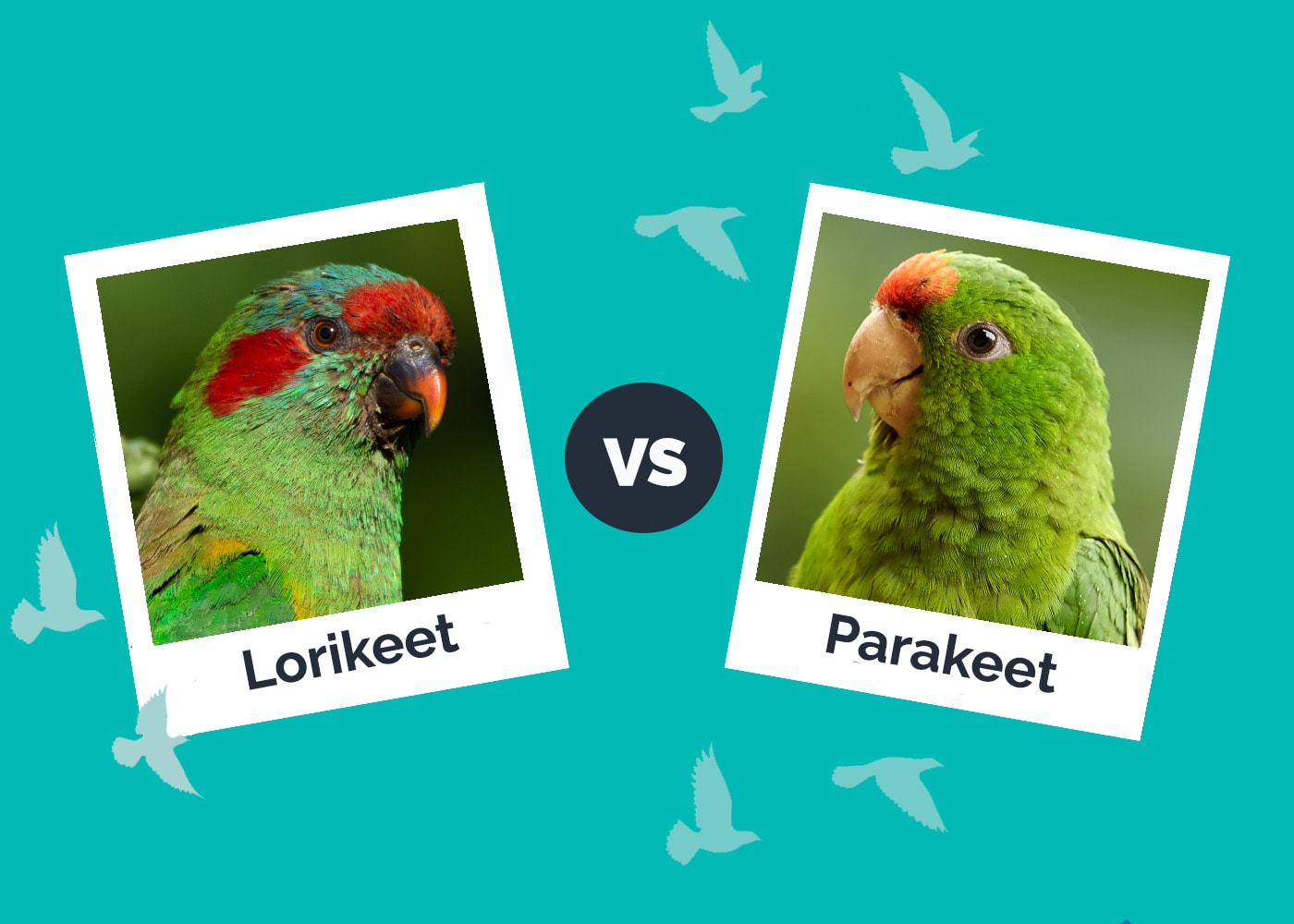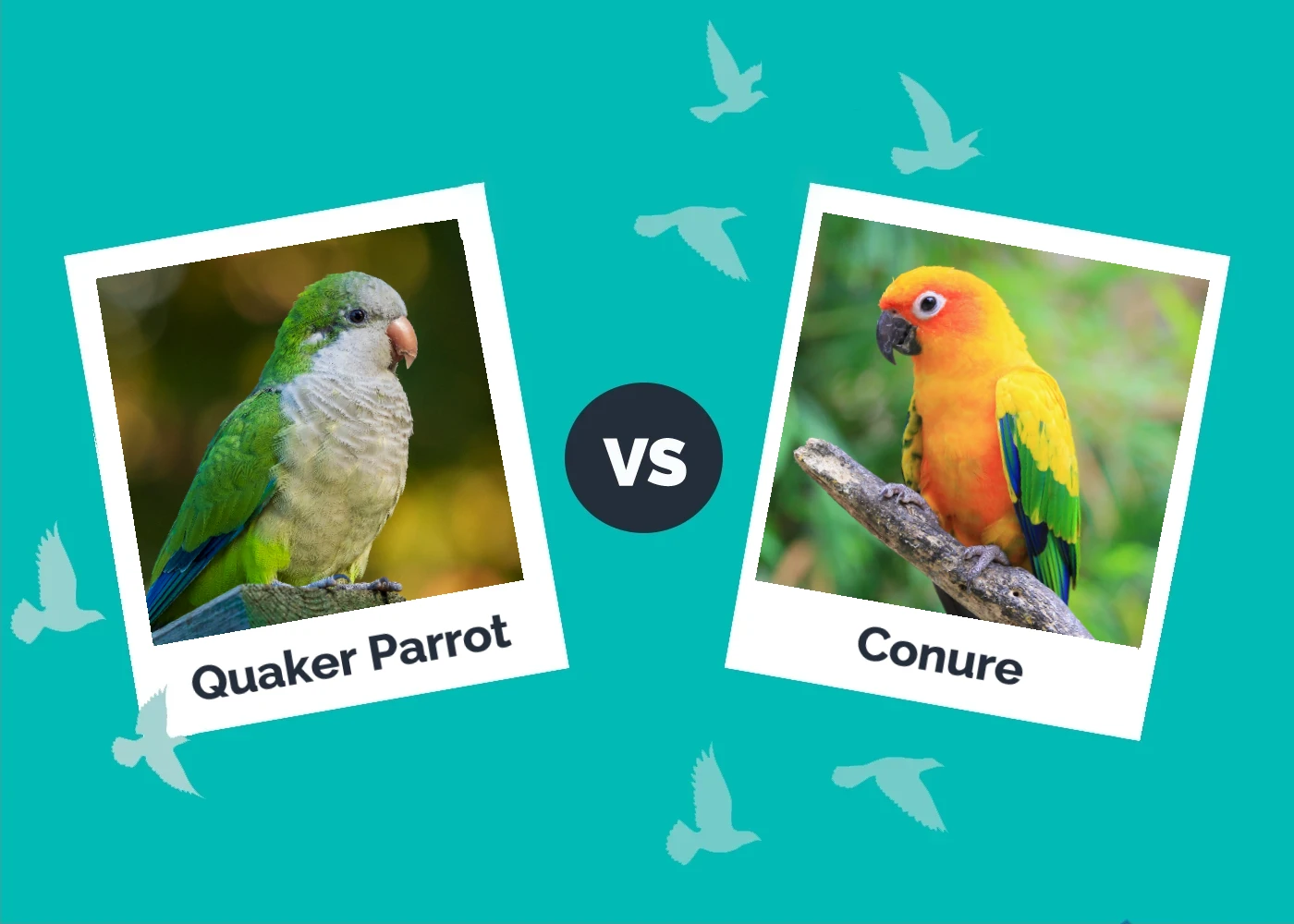9 Best Pet Birds for Beginners (Species & Pictures)

Updated on
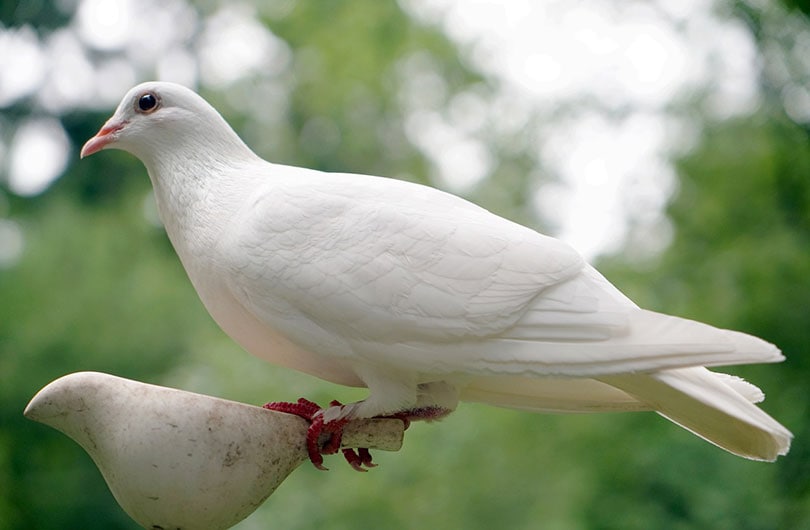
Are you ready to bring birds into your home? Pet birds are a great addition to any family and can provide years of companionship. But before you pick one up, it’s important to familiarize yourself with the different bird species available and decide which is best for you. In this article, we’ll take a look at 9 of the best pet birds for beginners, along with some helpful tips on how to care for them.
Before We Begin: What Makes a Bird Easy vs Difficult for Beginners?
When it comes to choosing a pet bird, there are some characteristics that make one species easier to care for than another. Here are some qualities that typically make a bird an ideal choice for beginners:
- Easy to handle: This means that the bird is not particularly nervous or skittish and will generally let you handle it without fear.
- Low maintenance requirements: Some birds are more low-maintenance than others, in terms of care and feeding. Beginners should look for species that don’t require a lot of specialized equipment or knowledge to take care of.
- Affordable cost: Some bird species are much more expensive than others. Look for one that fits within your budget.
- Friendly and social: Look for a bird that is outgoing, friendly and social. This will help you bond with your pet more quickly.
- Appropriate lifespan: If you’re 60, there’s nothing wrong with getting a bird! However, if you’re 60, you get a bird that lives 25+ years, and that bird has deeply bonded to you, you may be setting that bird up to spend some of its life without you. That’s important to keep in mind!
A note about bird lifespans: Birds generally live much longer than other pets, which means you’ll need to plan for its care over a longer period of time. The lifespan of a pet bird can range anywhere from 5 to 40 years or more, depending on the species!
The 9 Best Pet Bird Species for Beginners
1. Budgerigar (Budgie)
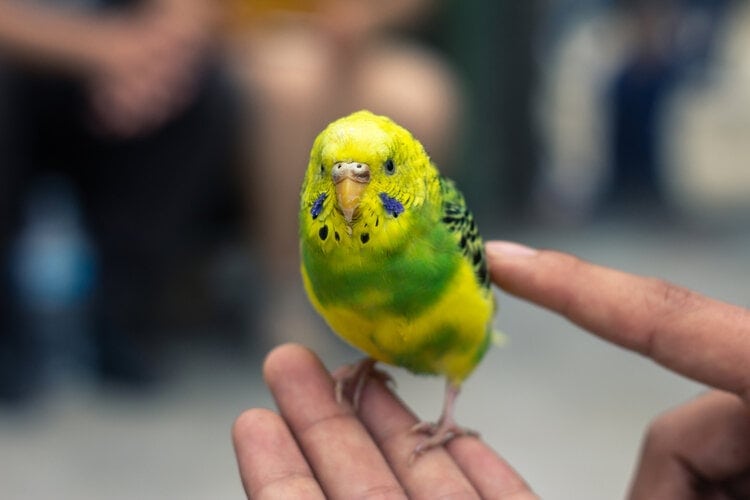
| Size: | 6 – 8 inches |
| Lifespan: | 5 – 10 years |
| Diet: | Seed-based |
| Noise: | Generally quiet but can be noisy at times |
The Budgerigar, or “Budgie” as it is commonly called, is one of the most popular pet birds in the world. These small parakeets are native to Australia and have been kept as pets in Europe since the late 1800s. Budgies are relatively easy to take care of, require minimal space, and can be taught simple tricks. They are also very social birds that enjoy interacting with their owners.
- Easy to care for
- Low cost
- Enjoys interacting with people
- Prone to obesity if not fed properly
- Needs regular exercise and stimulation
2. Cockatiel
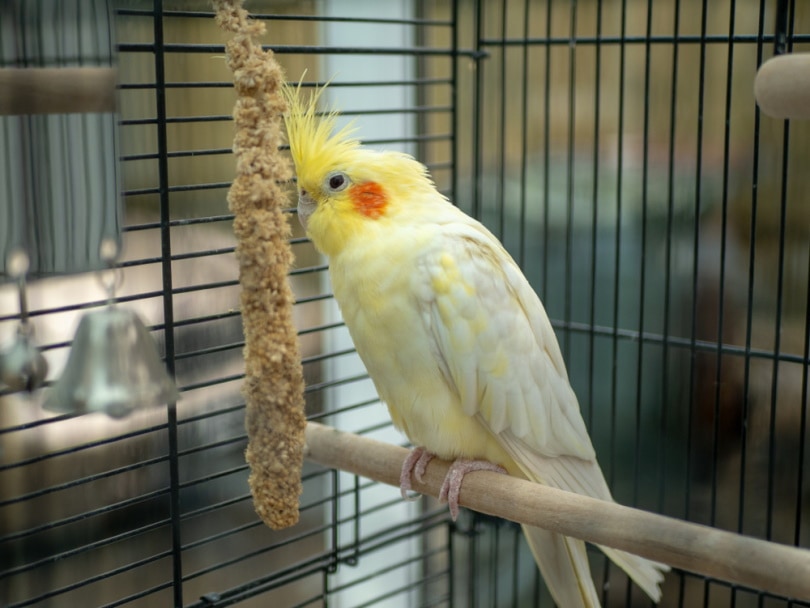
| Size: | 10 – 12 inches |
| Lifespan: | 15 – 20 years |
| Diet: | Seed-based diet supplemented with fresh fruits and vegetables |
| Noise: | Generally quiet but can be noisy at times |
The Cockatiel is another popular pet bird, native to Australia. These small parrots are prized for their gentle and affectionate personalities, as well as their ability to learn tricks and mimic human speech. Cockatiels are relatively low-maintenance and can be easily trained.
- Outgoing and affectionate personality
- Relatively low-maintenance
- Can be taught simple tricks
- May become shy if not handled regularly
- Noisy at times
3. Lovebird
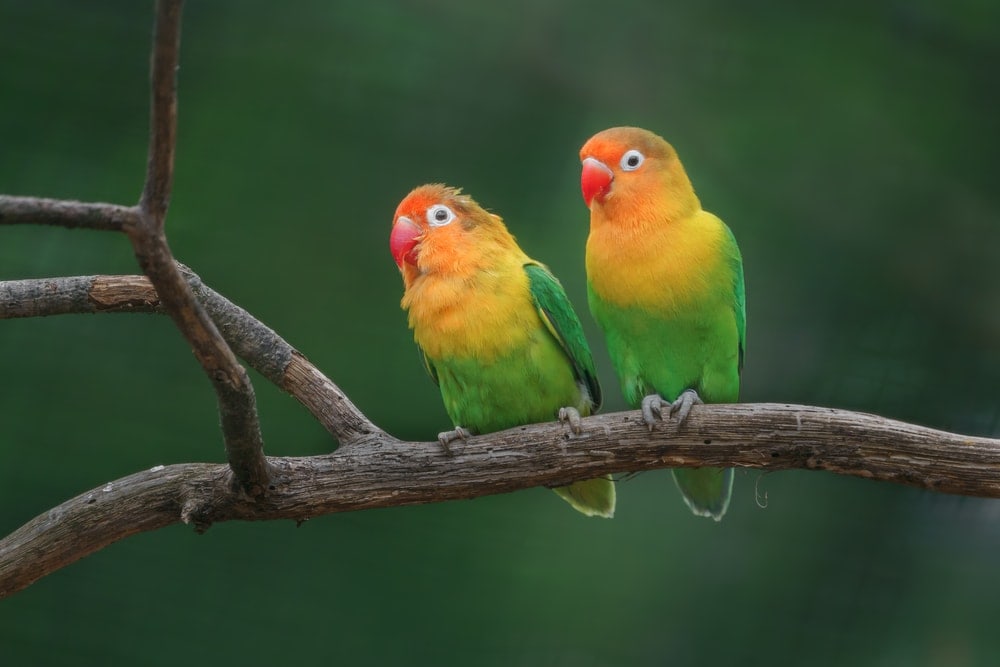
| Size: | 5 – 7 inches |
| Lifespan: | 10 – 15 years |
| Diet: | Seed-based diet supplemented with fresh fruits and vegetables |
| Noise: | Generally quite vocal |
Lovebirds are small parrots native to Africa. They are prized for their playful, affectionate personalities and their ability to bond deeply with humans. Lovebirds require a bit more care than some other pet birds due to their active nature and need for regular socialization. They often form bonded pairs and can get lonely so it’s best to get two Lovebirds instead of just one.
- Playful and affectionate
- Easy to bond with one person
- Can be quite active and require more attention than other pet birds
- Need regular playtime outside the cage
- Happiest if you have two instead of just one
4. Parrotlet
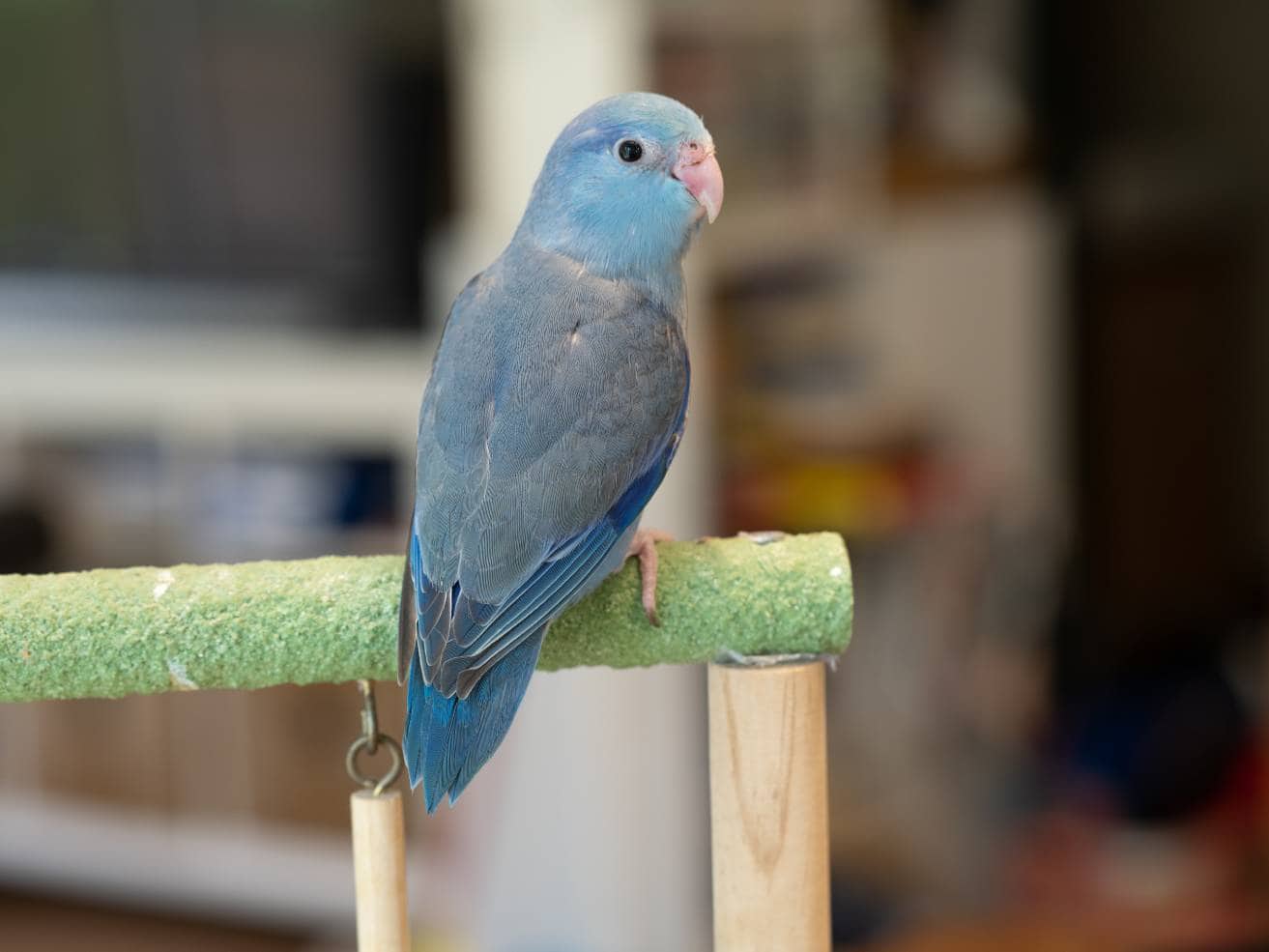
| Size: | 4 – 5 inches |
| Lifespan: | 15 – 20 years |
| Diet: | Seed-based diet supplemented with fresh fruits and vegetables |
| Noise: | Generally quite vocal |
Parrotlets are a type of small parrot native to South America. These birds are prized for their intelligence and ability to mimic human speech. They can be shy at times, but they bond deeply with their owners and love interacting with them. Parrotlets require more care than some other pet birds due to their active nature and need for socialization.
- Playful and affectionate
- Intelligent, can learn a variety of tricks
- Can be quite active
- Need regular playtime outside the cage
- Prone to nipping if not handled regularly
5. Conure
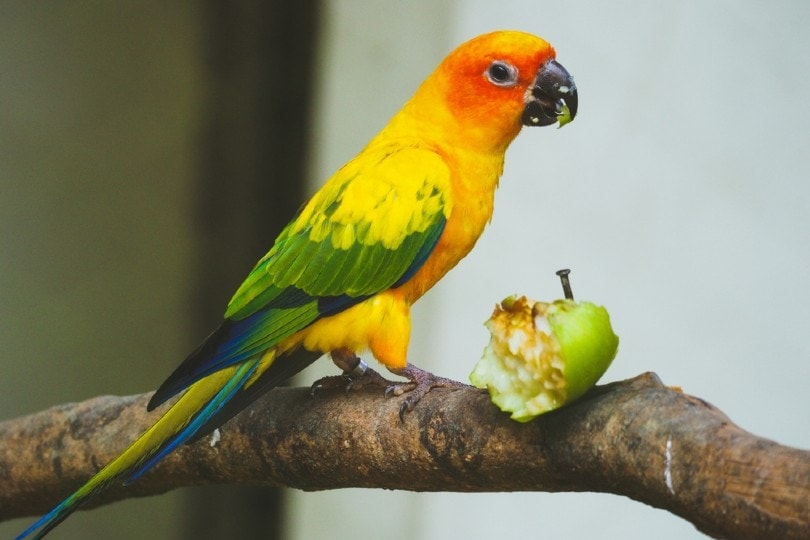
| Size: | 7 – 10 inches |
| Lifespan: | 15 – 25 years |
| Diet: | Seed-based diet supplemented with fresh fruits and vegetables |
| Noise: | Vocal |
The Conure is a type of small parrot from Central and South America. These birds are prized for their outgoing personalities, intelligence, and ability to mimic human speech. Like Parrotlets, Conures require more care than some other pet birds due to their active nature and need for socialization.
- Playful and affectionate
- Intelligent, can learn a variety of tricks
- Can be quite active and require more attention than other pet birds
- Need regular playtime outside the cage
6. Canary
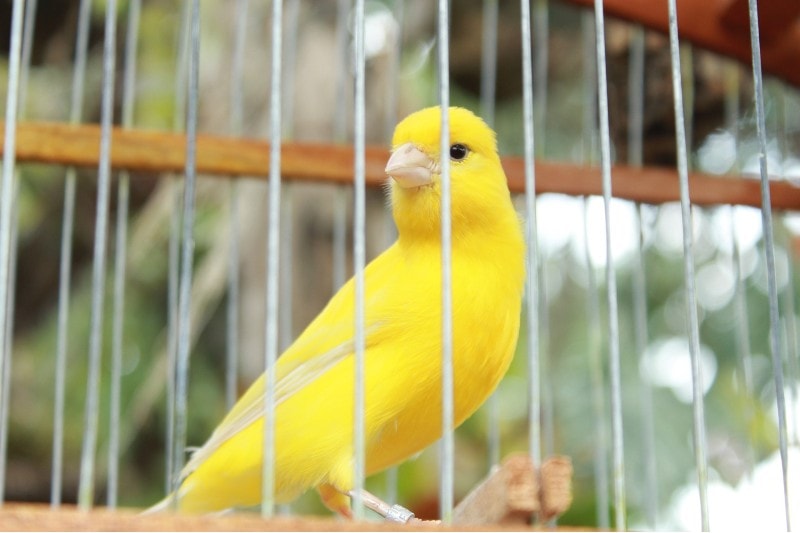
| Size: | 4 – 5 inches |
| Lifespan: | 10 – 15 years |
| Diet: | Primarily seed-based with some berries |
| Noise: | Melodic singing |
Canaries are small, colorful birds native to Europe and North Africa. They are most commonly yellow but can also be found in red, orange, and white. They are prized for their beautiful singing voices, and they can be great companions if given the right care. Canaries have a relatively simple care regimen but need regular interaction with humans in order to stay healthy and happy.
- Affectionate and gentle
- Beautiful singing voice
- Come in many colors
- Can be skittish around people at first
- Need regular playtime outside the cage
7. Zebra Finch
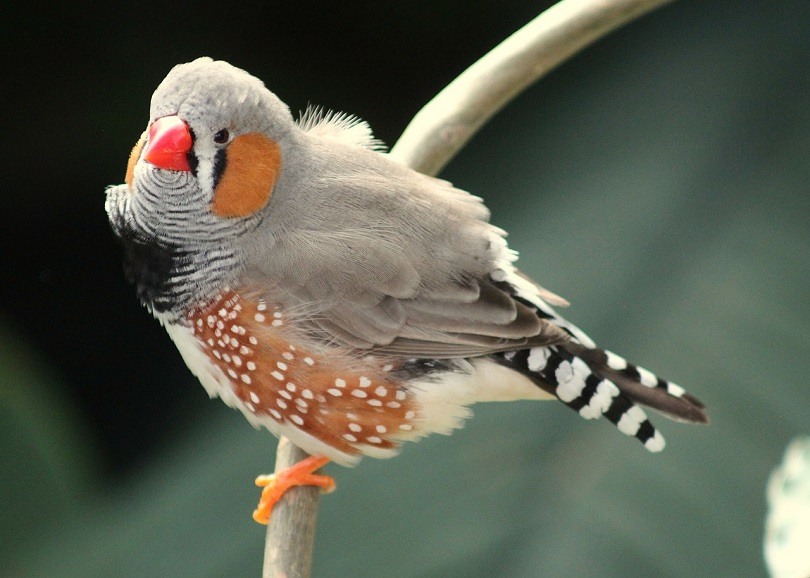
| Size: | 3 – 4 inches |
| Lifespan: | 5 – 7 years |
| Diet: | Seeds |
| Noise: | Singing |
The Zebra Finch is a small, brightly colored bird native to Australia. These birds are prized for their personalities and ability to learn complex songs. They are relatively easy to care for but need interaction with humans in order to stay healthy and happy. This is another bird species that is typically kept in pairs for socialization, so you may need two in order for the birds to be at their happiest. They’re also very affordable.
- Affordable
- Friendly and social
- Beautiful singing voice
- Generally need to be kept in pairs
8. Dove
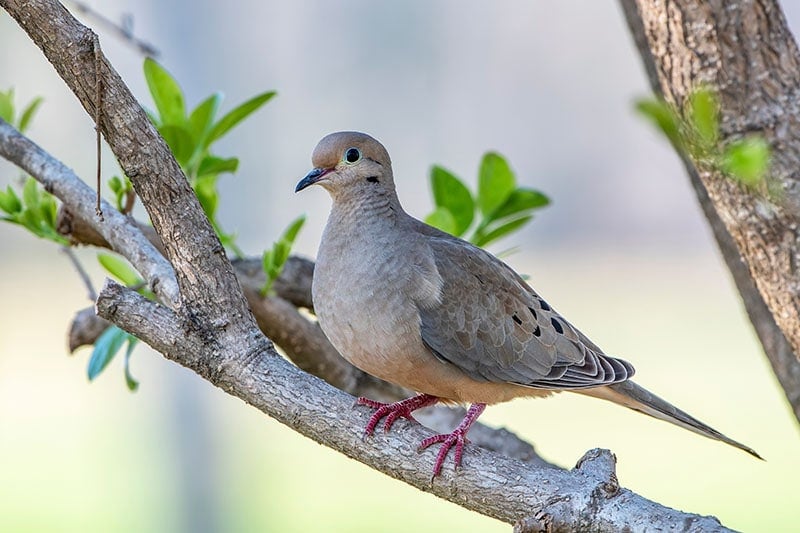
| Size: | 8 – 9 inches |
| Lifespan: | 5 – 7 years |
| Diet: | Seed-based diet supplemented with fresh fruits |
| Noise: | Quiet but may coo softly |
Doves are gentle, peaceful birds native to many parts of the world. These birds have soft plumage and a calming presence that can be soothing for humans. Doves require regular interaction with their owners in order to keep them healthy and happy but they generally don’t bite. They are best kept in pairs but can also be territorial, so it’s important to make sure they have plenty of space.
- Calm and gentle, often sit on people’s shoulders or hands
- Generally quiet
- Beautiful singing voice
- Best kept in pairs
- May be territorial so they need plenty of space
9. Java Sparrow
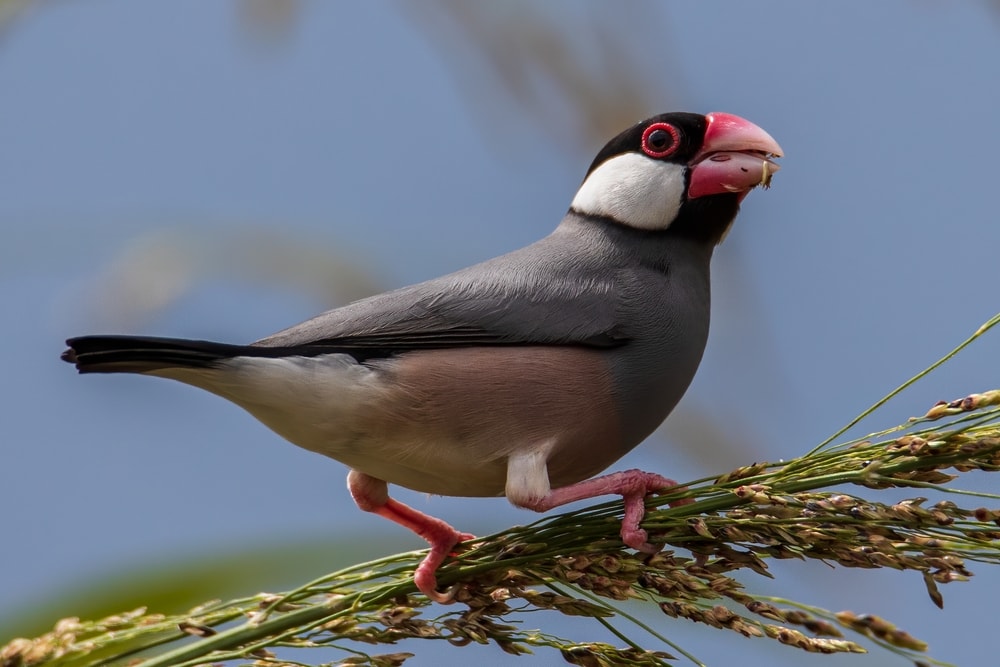
| Size: | 4 inches |
| Lifespan: | 7 – 10 years |
| Diet: | Seeds and grains |
| Noise: | Singing |
The Java sparrow is a small, outgoing bird native to Southeast Asia. They’re pretty low maintenance and don’t require a lot of playtime outside of the cage. They’re great for busy people because they can entertain themselves as long as they have plenty of toys. They may enjoy the company of other birds as well, but it isn’t necessary to keep them in pairs.
- Playful, outgoing personalities
- Beautiful singing voice
- Can entertain themselves
- Don’t need playtime outside the cage
- Need plenty of toys or other birds for entertainment

What Size Cage Does a Large Bird Need?
A large bird needs a cage that is at least 24 inches wide, 36 inches long, and 24 inches tall. The cage should also provide plenty of space for the bird to move around freely and access all of its toys, perches and swings. Additionally, it’s important to make sure the cage has enough bar spacing so that the bird can’t escape or become injured in any way. Finally, it’s a good idea to provide extra perches throughout the cage so that your bird can have plenty of opportunities to exercise and explore its environment.
Conclusion
Caring for pet birds can be a rewarding experience. If you’re looking to get your first bird, there are plenty of easy bird species that are suitable for beginners. From Budgies and Canaries to Doves and Zebra Finches and even Conures and Parrotlets, these birds offer personality and beauty while also being relatively low-maintenance.
See also:
- 7 Small Pet Birds That You Can Easily Keep at Home!
- 3 Birds That Don’t Fly That You Can Keep as Pets
Featured Image Credit: chrisjmit, Pixabay
